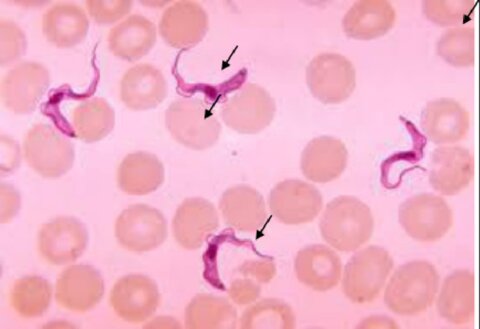Will a single bite from a tsetse cause trypanosomiasis?

Not necessarily! Only about 5% of tsetse carry the trypanosomes that cause trypanosomiaisis and, in the case of human sleeping sickness, the infection rate is probably less than 0.1% (Tarimo et al., 1985; Woolhouse et al., 1993). Moreover, even a bite from an infected fly will not necessarily lead to disease (Rogers, 1988). Thus most bites from tsetse are not dangerous.
However, for livestock living continuously in tsetse infested areas this is no consolation. If an ox receives just 10 bites a day, then over a month they will probably receive, on average, about 10 infective bites and so most cattle will be infected repeatedly every month. Many cattle in tsetse infested areas receive hundreds of bites a day and thus this game of 'Russian roulette' has very poor odds indeed.
References
Rogers, D.J. (1988). A general model for the African trypanosomiases. Parasitology 97, 193-212.
Tarimo, S.A., Snow, F.W., Butler, L. & Dransfield, R. (1985). The probability of tsetse acquiring trypanosome infection from single blood meal in different localities in Kenya. Acta Tropica 42, 199-207.
Woolhouse, M.E.J., Hargrove, J.W. & McNamara, J.J. (1993) Epidemiology of trypanosome infestations of the tsetse fly Glossina pallidipes in the Zambezi Valley. Parasitology 106, 479-485.